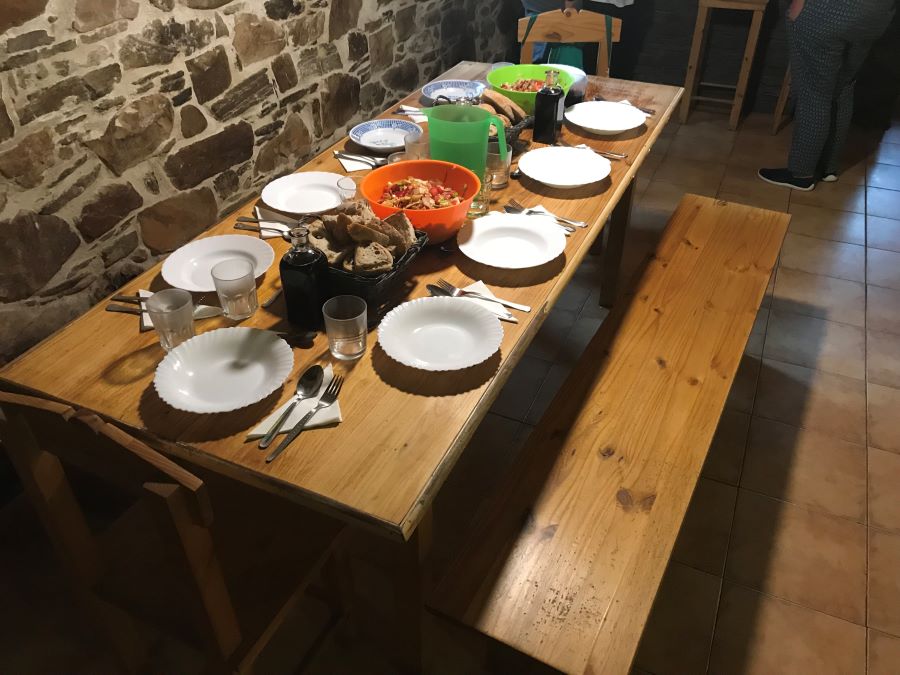The highlight of the day was meeting David and Celia, a couple of warm and friendly pilgrims who own and run the Albergue de Peregrinos in Bodenaya. David is 39 and comes from Madrid. Celia (pronounced ‘Thelia’) met David three years ago after he had bought the albergue. She had been working in an albergue in the next town.

I arrived early at the albergue, at about 12:30, but the albergue didn’t open until 14:00. I was reading my guidebook to see what was coming next on the route, thinking there was no way I was going to wait for 90 minutes out in the rain, and wondering how I might leave a note for Julia, another pilgrim I had met on the route today, and who expected to see me again at this albergue, when David stepped out of the albergue. He was getting ready to drive to town to pick up food for the evening’s pilgrim meal. He put my pack inside and drove me 800 meters to the village of La Espina, where I had lunch in a restaurant to wait out the rain.

The albergue is similar to Ernesto’s famous albergue in Guemes on the Camino del Norte, except that David’s albergue is much smaller, with only 21 beds. The theme is the same though – Camino of Life. There is a communal dinner that everyone attends, at which time the group decides when everyone will be woken up in the morning. “We are a family,” David says. “We eat together and we wake up together.” We all agree to be woken up at 6:30, to the sound of David’s gentle music.

There’s nothing to do in Bodenaya, and there’s no WiFi at the albergue, so we pilgrims entertained ourselves with conversation and card games. While we ate dessert after supper, David told us stories about the Camino. “In the Middle Ages,” he said, “a series of hospitals was built to support the growing number of pilgrims.” They weren’t hospitals as we know them today. They were refuges where pilgrims could find food and shelter for a night. He said that, frequently, French convicts were given the option to take the pilgrimage to Santiago because so few of them ever survived it. And if they did survive it and returned home, then they deserved to be absolved of their sins.

David says there are several pilgrim cemeteries near Santiago. It was common for pilgrims to die from disease, infection, or exposure on their journey. And when they arrived in Santiago, they still had to make it back home. There were no buses, trains, or planes to assist them in that endeavour.

David smiles when he says, “Pilgrims today complain about the mud, but there are hospitals and pharmacies along the way, and we have Goretex and every other advantage that pilgrims from the Middle Ages never had.” I smiled too, promising myself that I won’t complain so much about the mud in the future.

We had 18 pilgrims at David’s little albergue, representing 12 countries. So cool.
